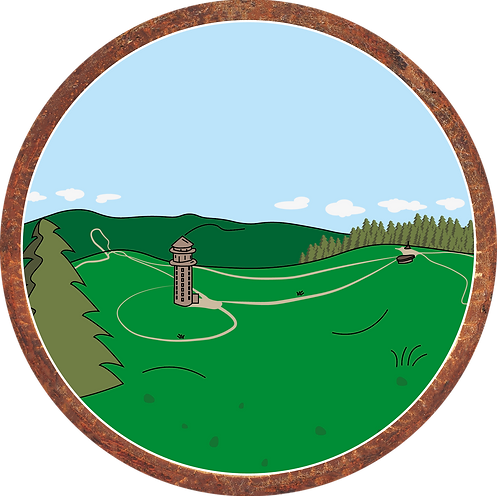Feldberg

You can't get any higher here: The Feldberg.
With an altitude of 1,493 meters, the Feldberg is the highest elevation in the Black Forest. At the same time, it is the highest mountain of all low mountain ranges in Germany and outside the Alps. It is located southeast of Freiburg in an area known as the Upper Black Forest.
The Feldberg massif has a total of four peaks. Not far from the main peak, which is also called the "Höchste" ("highest"), is the Mittelbuck, with an altitude of 1,472 meters. To the north of it, 900 meters away from the Höchsten, is the Baldenweger Buck with 1,460 meters. About two kilometers southeast of the main peak rises the Seebuck, which at 1,449 meters forms a kind of foothill. Below it, at 1,109 meters, lies Feldsee, a glacial cirque lake.
A total of five valleys are cut into the Feldberg, some of them very deep, especially those to the west. The Zastlertal and the St. Wilhelmer Tal open to the northwest, the Wiesental to the southwest. To the east extends the valley of the Seebach, the later river Wutach, which crosses the Feldsee. The St. Wilhelmer Tal offers a wonderful view of the Feldberg, which can be seen from there above the peaks of the surrounding mountains.
Because of its height, the Feldberg is predestined for weather observation. Regular measurements have taken place since 1915, and a station with radar has existed since 1937. Visitors are also amazed by the fantastic and unrestricted distant view of the Vosges, Swabian Alb, Hegau and Alps. In favorable weather, you can even make out the Zugspitze, Germany' highest mountain.
Especially in summer, a hike in the surroundings of the Feldberg is worthwhile. Then the diversity becomes clear, which results from the interaction of high forests and moors, the ice-age cirque lakes and the pastures and is unique in this form. It is worth mentioning that the Upper Black Forest is formed and influenced by ice-age glaciers. The Feldsee is thus a cirque lake, the largest of its kind in the Black Forest. It reaches a depth of up to 32 meters and is almost round. The Feldsee forest around it has been declared a ban forest on an area of 102 hectares.
The Feldberg is also known for its skiing area. The offer there includes sixteen slopes of various degrees of difficulty as well as five chairlifts and nine lifts. In addition, there are six trails for cross-country skiing. It is amazing that the oldest still existing ski club in Germany was founded here on the Feldberg, the SC Todtnau of 1891. In 1897 the first women's ski race was also held here.
The Feldberg can come up with even more special features. Around it lies a nature reserve of the same name, which was even the first in Baden-Württemberg and with 4,227 hectares is also the largest. And in an adjacent valley is Feldberg-Bärental, at 967 meters, Germany's highest standard-gauge railroad station, which is part of the Dreiseenbahn from Titisee to Seebrugg.
On the Seebuck there is a tower that can be climbed as a lookout point. It was used as a radio tower, but since 2013 it has contained a museum dedicated to Black Forest ham and a wedding room, the highest in Baden-Württemberg. Not far from the tower is a monument in honor of the Chancellor of the Reich, Bismarck.
In the Upper Black Forest there are other prominent mountains, for example the Herzogenhorn with 1,415 meters or the Belchen with 1,414 meters. The highest elevation in the Northern Black Forest is the Hornisgrinde at 1,164 meters. In the entire Black Forest, there are over a hundred mountains that exceed the one-thousand-meter mark.
Particularly to the Black Forest Belchen there is a special feature. From its peak you can see in the distance two other mountains with the same name, one is in the Vosges, the other in Switzerland. If you stand on the Belchen in the Black Forest in the evening on March 21 as well as on September 23, i.e. at the equinox, you can see that the sun sets over the Belchen in the Vosges. If you are at the same place in the morning on December 21, at the winter solstice, the sun rises directly over the Belchen in Switzerland.

